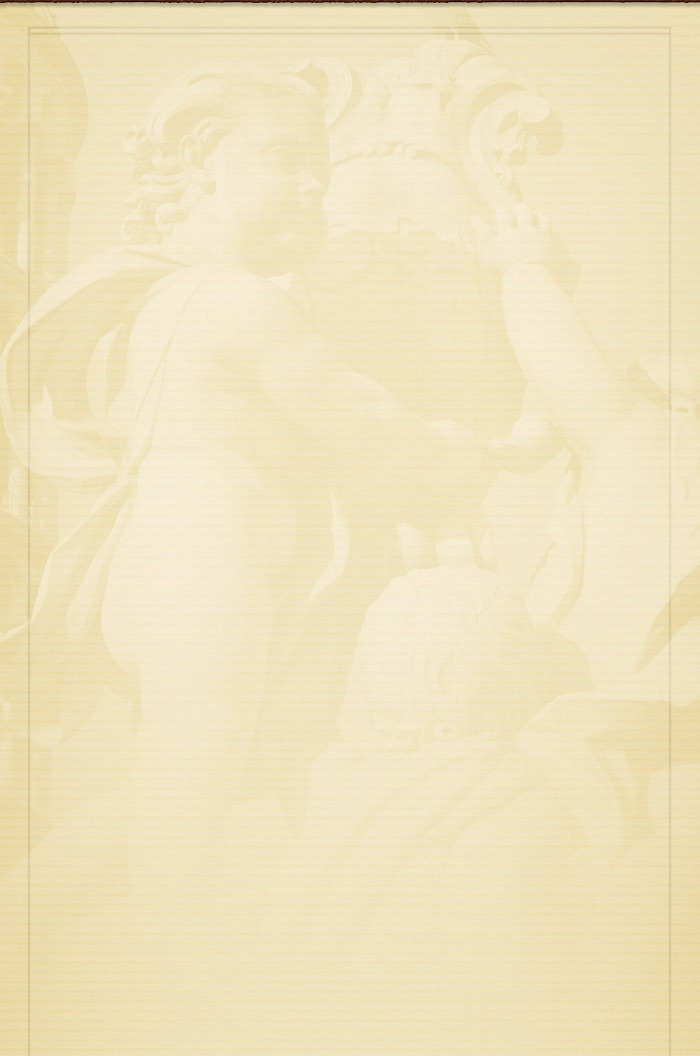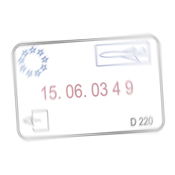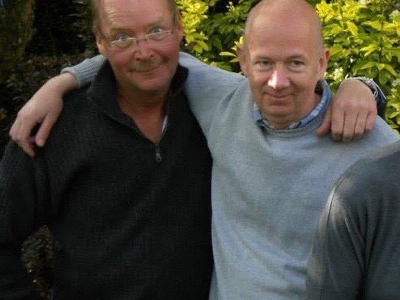Thursday, 9 August 2018





Dream
There is a funeral service in a church. I am the last (or one of them) to enter. In the first section of pews (full) is Mum. I think I shouldn’t look at her lest I smile, which might seem inappropriate at a funeral, but I do and smile. Someone about my nephew’s age is standing at the front of the second section and observing (everyone else is sitting - Piers’s 21st birthday a week ago). At the other end of the front row of the second section (by central aisle), my brother Bruce is sitting. He died suddenly two months ago. His row is full and the one behind nearly full. I had been thinking of going to empty rows at the back, but when I see him I sit directly behind him, thinking he won’t mind my singing. He is looking straight ahead and doesn’t see me. Then I awake and in my head there is the hymn with a verse that starts: ‘O friends in gladness let us sing’.
Interpretation
I didn’t realise till a friend pointed it out that I am walking into the church from the ‘wrong’ end. Everyone is facing me, so I must be walking in from the altar end. ‘Altar’ comes from the Latin ‘altus’ meaning ‘high’. It is the place of sacrifice where the body and blood of Christ are shared among the faithful, who thus become one with God. If I am coming from the altar end and sitting among the dead, it suggests that I am one of them.
I have no idea who the funeral is for. Nor any sense that I don’t know who the funeral is for. The question doesn’t arise in my dream mind. I think I am in the same way aware that my mother and brother have passed on, without needing to make it conscious or surprising. Everything is very matter of fact.
From a waking perspective, it seems obvious the funeral is for my brother, whose earthly service was 6 weeks earlier, and interment 4 weeks earlier. Yet he is among the congregation. Alternatively, the funeral is for me, the last to take his seat among those who have passed over. Only one person stands and that is the just 21-year-old observer, whose presence seems to say: death is also a significant birthday. The first section, which looks full, must be for my mother’s generation, who have nearly all passed on. The second section, which has my brother at the front, is for my generation and still has empty pews at the back. He is only the second person I can think of from our generation to have died.
My mother’s presence might indicate that she has been helping Bruce with his transition.
I asked another friend why it might be that I could connect with my mother with a smile, but made no eye contact with my brother. She suggested the recently dead might need ‘rest’ time to recuperate and reflect on the life just passed. He could hear me (my singing - perhaps a symbol of my prayers for him), but not yet communicate. That sounds right. I have been receiving lots of messages from him, as I believe, since his passing (songs, synchronicities, this dream, wine, presents, a hug etc), which seems to contradict the ‘resting’ idea, but there may be an explanation I’m unaware of.
For me, on waking, the principal message of the dream, is that my brother is in a good, safe, holy place and being well looked after. And the hymn of gladness that comes to me when I awake seems to confirm and underline this good news. It is the thing that I most want to see.
Wikipedia makes the following observation about the hymn: “The first stanza of the hymn Ye Watchers and Ye Holy Ones addresses each of the traditional nine choirs of angels. The second stanza focuses on the Blessed Virgin Mary. the third stanza urges the faithful departed to join in praising God...The fourth stanza [beginning ‘O friends in gladness let us sing’] finally addresses the present congregation to join together in praise.”
My friend commented: “Oh Ian, could there be a lovelier dream? Everyone in harmony, up to and including the angels! A real sense of communion in the spirit, I feel”.
I don’t know if this theme is presented in such deliberate and clear comprehensive terms in any other hymn I know. I had no idea it existed here. And yet this hymn of all hymns is the one left with me after the dream. It wasn’t sung in the dream, where the service had not yet begun and all bar the observer were seated, waiting. It is in my head upon waking. That by itself calls for some explanation.
The ‘gladness’ line is the first of the fourth and last verse (note symbolism of ‘four’), which is the verse for ‘the living’. In the dream, I am become one with the departed souls: the next one to join after my brother. Maybe I will be the next. (The respected Jungian, Marie Louise von Franz, in her book ‘On Dreams and Death’, emphasises that ‘death dreams’ do not necessarily signify imminent death. The ones that do have a certain feel to them, which she cannot out into words.) And/or maybe I am visiting the spiritual service, which is indeed for my brother. This is most likely why the hymn comes to me after I’ve woken and not in the dream church. It says your time has not come, and you must be glad for Bruce and find/make gladness too among the living on earth.
As an aside, perhaps, or a postscript, here is a little more information on the hymn, mainly again from wikipedia.
It found its present form in a text written by Athelstan Riley in 1906. As I read that, ‘Athelstan’ seemed an amazing name to survive into modern times. It is an Anglo-Saxon name, the name of an early king of England (c. 900 AD) - some say the first - and grandson of Alfred the Great. It means ‘Noble Stone’. It reminded me of the noble stone that Bruce and I crossed the Clattering Bridge to see in Kingston the last time we met - Athelstan’s coronation stone.
Athelstan (Riley) used two ancient Eastern Christian prayers as sources for his text: Te Deum and Axion Estin.
Te Deum is a hymn of praise following the outline of the ‘Apostles’ Creed’ traced back to 4th Century authors like Ambrose, Augustine and Bishop Nicetas.
Axion Estin is a hymn to Mary, Mother of God, which has a line said to be inspired by the Archangel Gabriel on Mt Athos - another ‘noble stone’: “It is truly right to bless thee, O Theotokos [Mother of God]”.
The music comes from a 1623 German hymn: ‘Let Us Rejoice Most Heartily’ arranged by Ralph Vaughan Williams.
This is the backdrop to Ruth’s point about universal communion. This hugely meaningful and appropriate hymn seems to say, to imply, that Bruce’s death, and presumably each human death, perhaps each death of every life form, is an occasion for a universal communion, coming together, of all the spiritual states and hierarchies. This cosmic significance and inter-relationship of each birth and death bring to mind Jesus’ words:
“Are not five sparrows sold for two farthings, and not one of them is forgotten before God?”
“Even the very hairs on your head are all numbered.”
In great things and small, they suggest, we are all connected in a sacred and practical way - in ways to incorporate into our daily practice.



